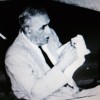
Just before Easter 1961, Cicely Saunders sat down to send greetings to a colleague. It was someone who shared her interests in developing special facilities and approaches for the care of the dying – especially those with advanced cancer. Nothing unusual in that. She was now getting into her stride with a growing ambition to establish a modern hospice in London. One that would not only provide excellent clinical care, but would also conduct research and deliver teaching programmes. As her journey unfolded she was getting to know quite a large number of fellow enthusiasts and establishing a wide correspondence in the process. But this letter was different. It was addressed to Dr KJ Rustomjee of Deal Place, Colpetty, Colombo – in what was then Ceylon.
A prodigious worker
One chilly day in November 1960, Dr Rustomjee had arrived at St Joseph’s Hospice in Hackney, eager to meet the enthusiastic doctor who had been working there for the past three years, improving her understanding of terminal care and also attracting attention for her publications in Nursing Times (1) and a substantial chapter in Ronald Raven’s recent six volume edition on Cancer (2). The two had bonded immediately and soon ‘Rusty’ and Cicely were in regular contact by air-mail.
Dr Kurshedjee Jamsdjee Rustomjee was born in 1893. As early as 1927 he was involved in work on the epidemiology of malaria in Ceylon and published a major report on this in 1944. He was President and Chairman of the Ceylon Cancer Society from 1951 to his retirement in 1965.
Tall, imposing and a prodigious worker, he had done much to champion the need for cancer care in Ceylon. His interests spanned the entire spectrum from disease prevention, to treatment and terminal care. He was at the forefront of health education about cancer, tackling a sensitive subject with energy and frankness. He produced hard-hitting poster boards and displays in a bid to raise public awareness. He saw ‘ignorance, delay, indifference and false modesty’ as the enemies to seeking help. And he was particularly concerned with preventable disease caused by smoking and the chewing of betel leaf.
In particular Dr Rustomjee harboured his own ambition to establish a terminal care home in Colombo. Some years before, the Ceylon Cancer Society had made a pledge to the then Prime Minister SWRD Banderanaike that it would establish such a home for the ‘shelter, comfort and peace of terminal cases of cancer’. By the time Rusty and Cicely met in 1960, plans for this were well advanced and by early 1961 an elephant was deployed to clear the site in preparation for building.
Shared interests
In their correspondence, Cicely and Rusty exchanged news and updates on their parallel projects. Whilst her letters were carefully typed by her secretary of the time, Jenny Powley; Rusty’s were hand written. Hers were quite formal; his less so. But they did exchange pleasantries about the weather, bouts of illness, and events of the day. He wrote about and sent pictures of his wife Marie, which Cicely liked. On one occasion he even enquired about Cicely’s marriage plans.
Over the years Cicely updated him on the fund-raising work for St Christopher’s and the successes and disappointments along the way. In time she had pictures to send of the hospice building going up and then becoming operational, from 1967. She also supplied him with a steady stream of reprints of her publications from the period. Each was gracefully acknowledged.
He shared with her the details of the home being built in Ceylon, its facilities and how it was to be staffed. He then sent a full album of photographs depicting the opening ceremony, of 19th November 1962, with its ritual lamp-lighting and Buddhist ceremonial.
He also reported some of the problematic issues that could arise once the place was up and running. There were ‘teething troubles’ and clashes of personality between board members and the Matron at the Banderanaike home. A stormy meeting resulted in which Rusty, with a flourish, had to tender his resignation – before the protagonists had second thoughts and relented. He returned with even more authority and afterwards all was well.
When he retired formally, he gave his energies to establishing materials for the teaching of doctors about cancer in Ceylon, and enlisted Cicely’s help in obtaining text books and also assembling a library of 35mm slides for others to use in lectures and talks.
Making introductions
Dr Rustomjee had many connections. When he visited St Joseph’s in 1960 he was en route to Ceylon from the United States where he had undertaken a wide-ranging tour of organisations and facilities engaged in cancer care. On this same visit he had also attended the Fourth National Cancer Conference, which had taken place over three days in September at the University of Minnesota, Minneapolis.
He wrote up the whole experience in a report sent to Cicely in February of the following year.
When in Summer 1962, Cicely contemplated making a similar visit, he was quick to step in and make the necessary introductions. These included a connection to Mildred Allen at the American Cancer Society, as well as the Home of our Lady of Good Counsel, in Minnesota. The following year Cicely headed to the States herself, followed in his footsteps for part of the way and on concluding her trip, did just like her friend by preparing a detailed report that she could pass on to others.
Her connection with the American Cancer Society was to be long-lasting and beneficial.
On the same wavelength
In December 1969 Rusty remarked that he was ‘not so strong now’. Their correspondence appears to have ended, nine years after it started, in March 1970. Cicely wrote to her friend, whom she had met only once, for the last time. She was recovering from a period of sick-leave, but still trying to help him with his acquisition of a commemorative set of ‘Appollo 12’ space mission slides!
I have not yet been able to ascertain when Rusty died.
Years later, in 2002, at a Wellcome Witness Seminar on the history of pain, I asked Cicely if she could recall her links with Dr Rustomjee. She replied with alacrity: ‘I just remember him as a splendid chap … we were in some way or other on the same wavelength, although we came from such very different places. What we were aiming to do was something remarkably similar, and he got there first’.
#hpmglobal and the Palliative Care Association of Sri Lanka
Today we can see a growing community of palliative care activists around the world who share ideas and information via social media and modern communications. Internet links, downloads, pdfs and tweets are the lingua franca of exchange. The hashtag #hpmglobal captures this succinctly. For Cicely and Rusty, by contrast, there was the air-mail letter, the sea-mail parcel and the persistent uncertainty about whether things had arrived. For them, the unit of exchange for publications was the precious and limited number of reprints.
Of course, we should acknowledge that the ideas forged by Cicely and Rusty were not equal in their effects. St Christopher’s became a global beacon for innovation. Hospice and palliative care services in the United Kingdom grew exponentially in the decades after its opening.
By contrast, when we conducted our most recent ‘world map’ survey of palliative care development, in 2011, Sri Lanka (the former Ceylon) was one of 74 countries in Group 3a – with isolated provision of services. Sri Lanka at that time had just one palliative care service for over 20 million people, so clearly there remains much to be done.
This month however see the launch of the new Palliative Care Association of Sri Lanka. I feel confident that the creation of a national association will assist in policy formulation, situation analysis and service development in ways that will make for better palliative and end of life care for the people of Sri Lanka who might benefit.
Those who take forward this work will be standing on the high shoulders of the remarkable Dr KJ Rustomjee, and the friend he met on just one day in 1960 – Dr Cicely Saunders.
David Clark
References
(1) Saunders, C.(1959a) Care of the dying 1. The problem of euthanasia. Nursing Times, October 9: 960-61; Saunders, C. (1959b) Care of the dying 2. Should a patient know …? Nursing Times, October 16: 994-95; Saunders, C. (1959c) Care of the dying 3. Control of pain in terminal cancer. Nursing Times, October 23: 1031-32; Saunders, C. (1959d) Care of the dying 4. Mental distress in the dying. Nursing Times, October 30: 1067-69; Saunders, C. (1959e) Care of the dying 5. The nursing of patients dying of cancer. Nursing Times, November 6: 1091-92; Saunders, C. (1959f) Care of the dying 6. When a patient is dying. Nursing Times, November 19: 1129-30
(2) Saunders, C. (1960) The management of patients in the terminal stage. In R. Raven ed Cancer, Vol 6. London: Butterworth and Company, 403-17
Acknowledgements
I am grateful to the archives department of Kings College London, for permission to reproduce these images and in particular to Chris Olver for making them available to me. Current work on the Cicely Sanders papers can be followed at: https://cicelysaundersarchive.wordpress.com/




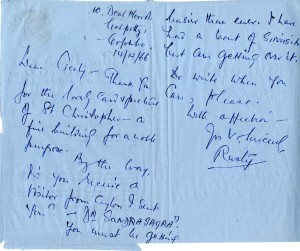
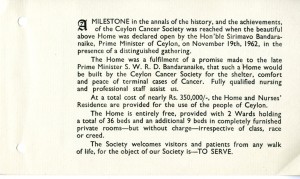
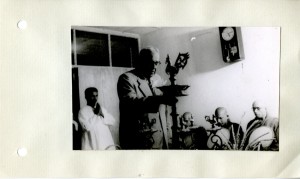
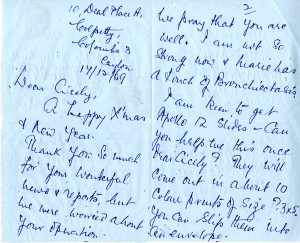
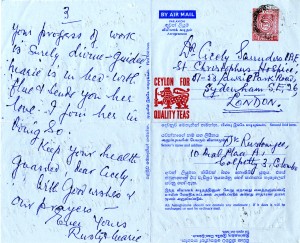
Thank you for a very interesting and insightful reflection on a bit of history sir. Rustomjee was a very famous name at that time..We have fallen behind. As you probably know we have taken a few tentative steps forward. Dr Suresh Kumar has our inspiration and guide would like to share your blog on our developing website. palcaresrilanka.org
Many thanks for your interest in this post Eugene. Could you put a short description of it on your website, with a link to our blog for people to read the full piece? That way they will come to the blog and see other things that may be of interest to them. All good wishes David Clark
We certainly will place this in our nascent website-
palcaresrilanka.org
eugene.